Chordata (vertebrates and invertebrates)
1/47
There's no tags or description
Looks like no tags are added yet.
Name | Mastery | Learn | Test | Matching | Spaced |
|---|
No study sessions yet.
48 Terms
synapomorphies of chordata
notochord
dorsal hollow nerve cord
post-anal tail
what is the notochord made of and what is its function?
it is a stiff, flexible rod of collagen
derived from mesoderm
support and muscle attachment
what does the notochord become in vertebrates?
vertebrae
dorsal hollow nerve cord
formed from the folding of the ectoderm during embryonic development
becomes the CNS
located dorsal to the gut
what are other key features of chordates that are not synapomorphies?
pharyngeal slits
closed circulatory system
segmentation
how do chordates reproduce?
sexually
dioecious
internal or external fertilization
what type of environments do chordates live in?
diverse environments
trend of movement from water —> land
pharyngeal slits
water is brought into the pharynx (a muscled organ that brings water into the mouth via cilia), which then passes through openings to the outside (the pharyngeal slits)
feeding and respiration
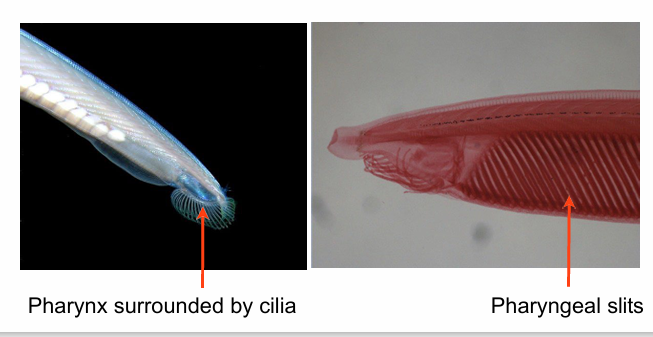
why are pharyngeal slits not considered a synapomorphy of chordates?
they were present before chordates diverged
they are not unique to chordates
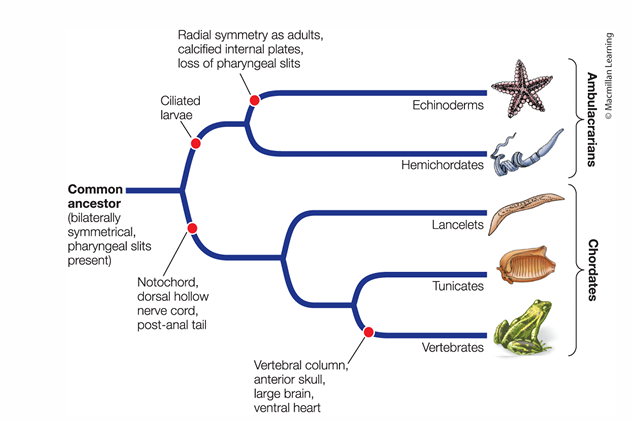
key features of tunicates (aka sea squirts)
have a tunic: a thick cellulose body covering
lack chordate features as adults
mostly sessile, one swimming species
marine
invertebrates
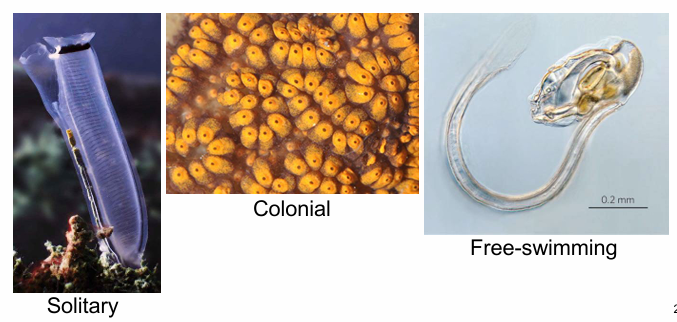
how do tunicates feed?
incurrent and excurrent siphons
filter feeders
why are tunicates still considered chordates if they lack key chordate features?
they have these features as larvae, but lose them as adults when they undergo metamorphosis
larvacean tunicate
free-living
do not undergo metamorphosis —> retain chordate features throughout life
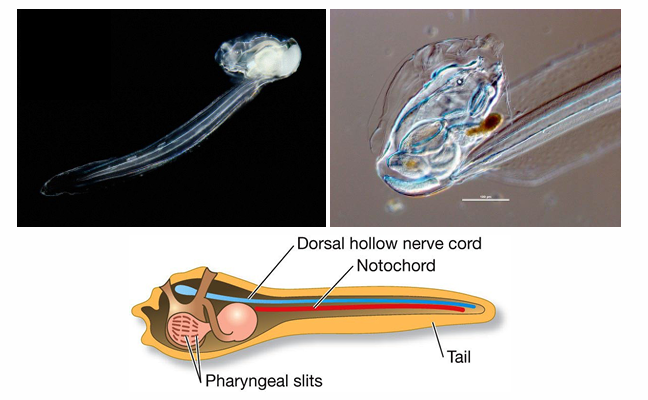
how are hagfish and lampreys related?
they are sister to each other
key features of hagfish
no bones or jaw
vertebrae are lost/reduced
have cranium made of cartilage
“teeth” made of keratin
have skin and slime for defense
predators on polychaetas, or scavengers
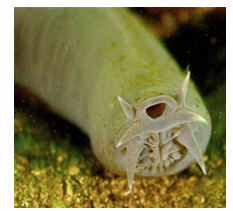
key features of lampreys
no bones or jaw
have cartilaginous vertebrae
have a sucker-like mouth with rasping teeth
filter feeders or predators
some adults are ectoparasites on fish
fresh or salt water
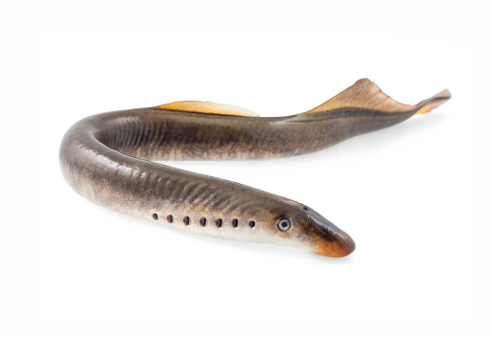
which lineages were the first to evolve bones?
ostracoderms and placoderms
Ostracoderms
jawless
have bony external armored plates, but still have cartilage endoskeleton
filter feeders
non-monophyletic
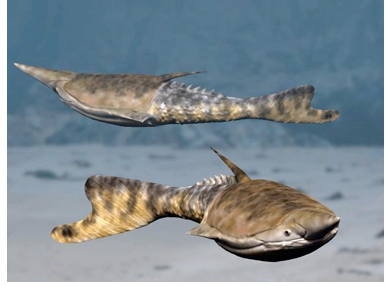
Placoderms
one of the first vertebrates to have true bony jaws with true bony teeth
bony armored exoskeleton, cartilaginous endoskeleton

how did jaws evolve?
anterior gill arches (cartilage that supports pharyngeal slits) were modified into bony jaws with teeth
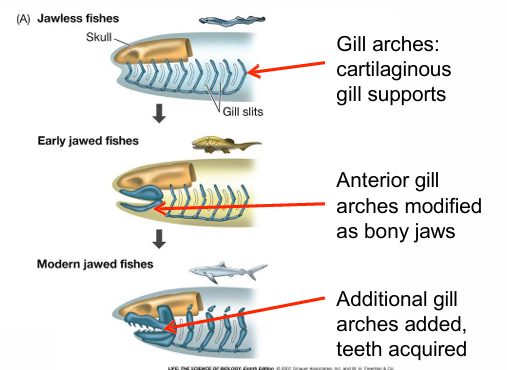
gnathostomes
vertebrates w/ jaws
placoderms, chondrichthyes, bony fishes, tetrapods
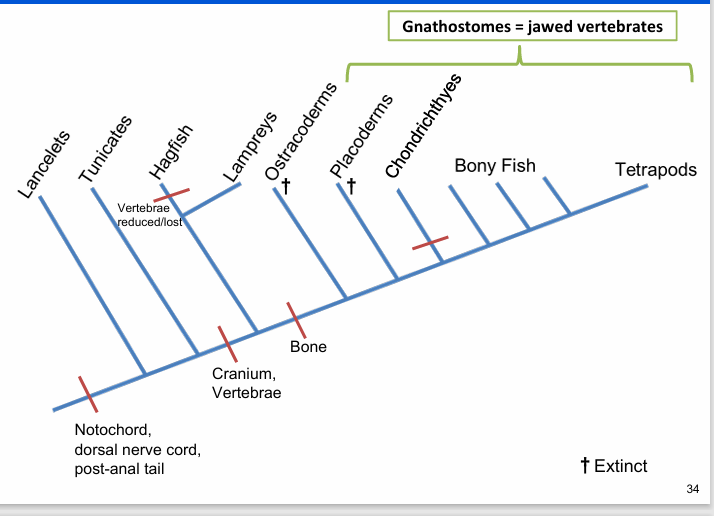
agnatha
lack jaws
hagfish, lampreys, ostracoderms
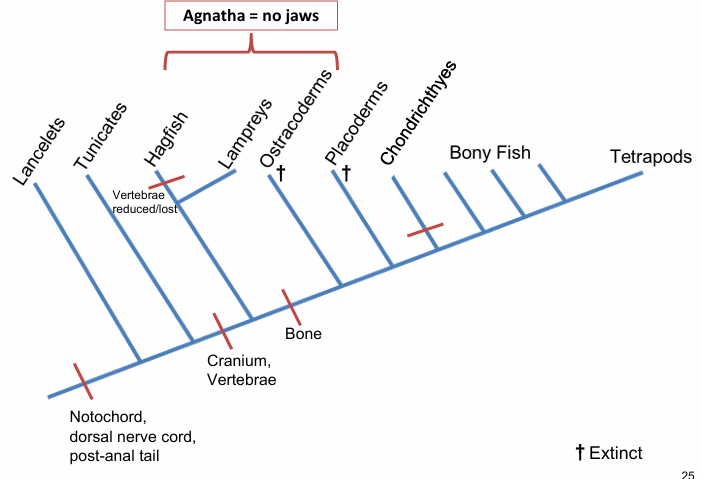
Chondrichthyes
cartilaginous fish (lost bones)
flexible cartilage skeleton
vertebrates
sharks, rays, sawfish, skates, chimeras
mostly predators, some scavengers
true jaws (made of cartilage)
fast swimmers
diverse reproductive strategies
dermal denticles: small, tooth-like scales on the skin that are homologous to vertebrate teeth
lancelets
sandy sediments
small marine animals
are filter feeders
use pharynx and slits
lack siphons
segmented muscles
intervebrates
which chordates are vertebrates vs invertebrates?
vertebrates: hagfish, lampreys, ostracoderms, placoderms, chondrichthyes, bony fish, tetrapods
invertebrates: lancelets and tunicates
What are osteichthyes and which lineages do they include?
bony fish
includes ray-finned fish, coelacanths, lungfishes
key features of osteichthyes
chordates
vertebrates
have jaws
ray finned fish (Actinopterygii)
largest group of boney fish
freshwater and marine
diverse feeding strategies, but almost always use suction feeding
lobe finned fish
most extinct, but coleocanths and lungfish are extant
lungfish have gills and lungs —> can survive out of water longer
have bones, but no bony spines as part of their fins
fins are joined to the body by a single bone instead
how are the bones of lobe-finned fish and ray-finned fish related to tetrapod limbs?
the bones of lobe-finned fish are homologous to tetrapod limbs
the bones of ray-finned fish are not homologous to tetrapod limbs
key innovations involved in the transition to life on land for tetrapods
fins —> limbs
lungs
modifications to skin
internal fertilization
shelled eggs
how did lungs evolve?
evolved in the MRCA of bony fish
evolved from swim bladders
lived in low oxygen environment —> air pocket evolved from digestive tract
in ray fish —> pocket became swim bladder
in lung fish —> pocket became lungs
what is the function of the swim bladder?
buoyancy
which lineage was the first to transition to land?
amphibians
which lineages are part of tetrapods?
amphibians, mammals, lepidosaurs, turtles, birds, crocodilians
key features of amphibians
vertebrates
skin used for respiration —> allowed them to depend less on water (but are still need a moist environment)
some live mostly on land and reproduce in water, some are entirely aquatic
some lost lungs
metamorphosis from tadpole larva with gills into adults with lungs
not amniotes
key features of amniotes
impermeable skin
efficient kidneys
amniote egg which prevents dessication —> allowed them to live in dry environments
no metamorphic larval stage
some lay eggs, some don’t
what lineages do amniotes include
mammals, lepidosaurs, turtles, birds, and crocodilians
key features of mammals
hair
sweat glands
mammary glands
4-chambered heart
what are the 3 major groups of mammals?
Prototherians
Marsupials
Eutherians
prototherians
lay eggs
provide milk, but lack nipples
ex. platypus
marsupials
have placenta
young are born undeveloped and develop in a pouch
ex. kangaroos
eutherians
larger placenta
young are born developed
ex. humans
examples of convergence in mammalian evolution
similar body morphology in eutherians and marsupials, despite living in geographically isolated regions
3 major groups within repitles
lepidosaurs: tuataras, snakes and lizards (squamata)
testudines: turtles and tortoises
archosaurs: birds, crocodiles, dinosaurs
what are some features that are conserved amongst birds that allowed for the evolution of flight?
endothermy
feathers
hollow bones
high metabolic rate
efficient respiration through air sacs
what type of heart do archosaurs have
4-chambered (like mammals) due to convergent evolution
are reptiles monophyletic?
no, they are paraphyletic (must include birds to be monophyletic)